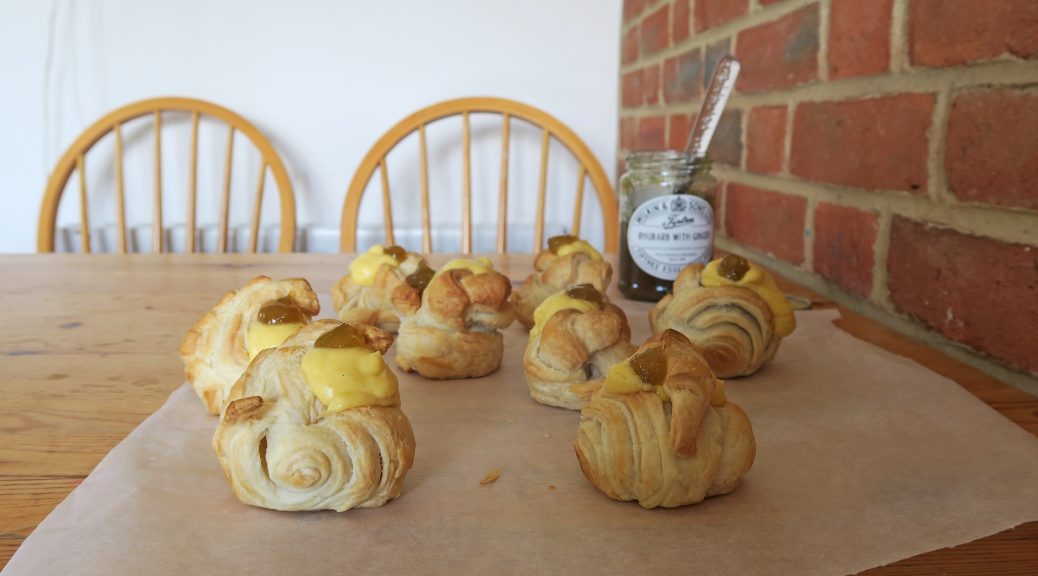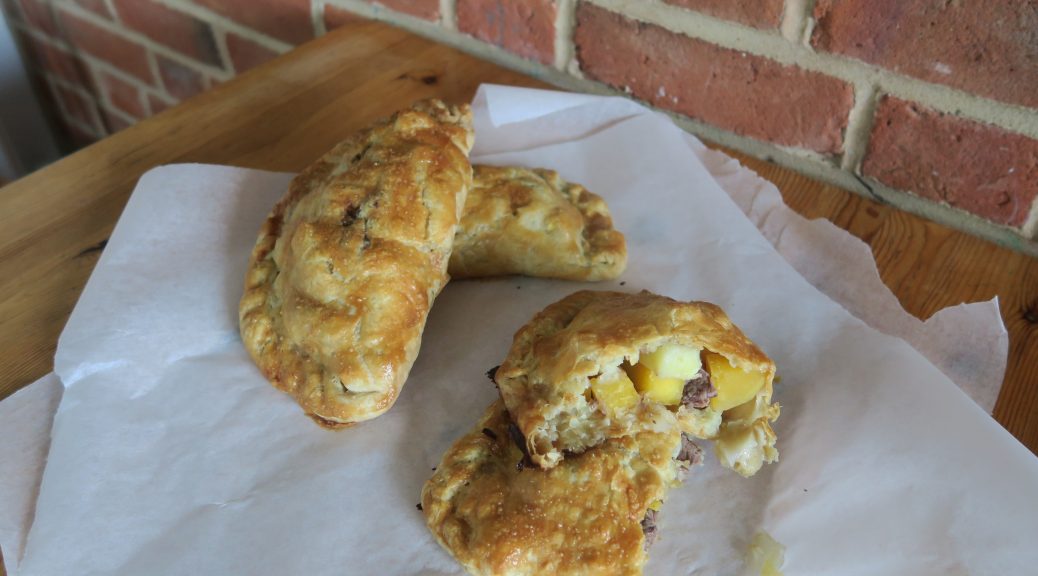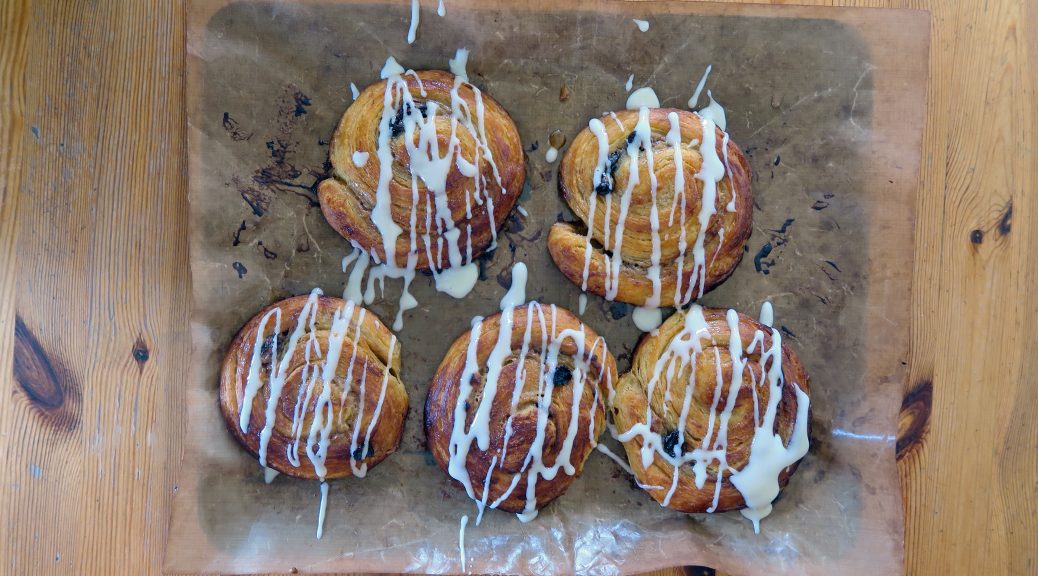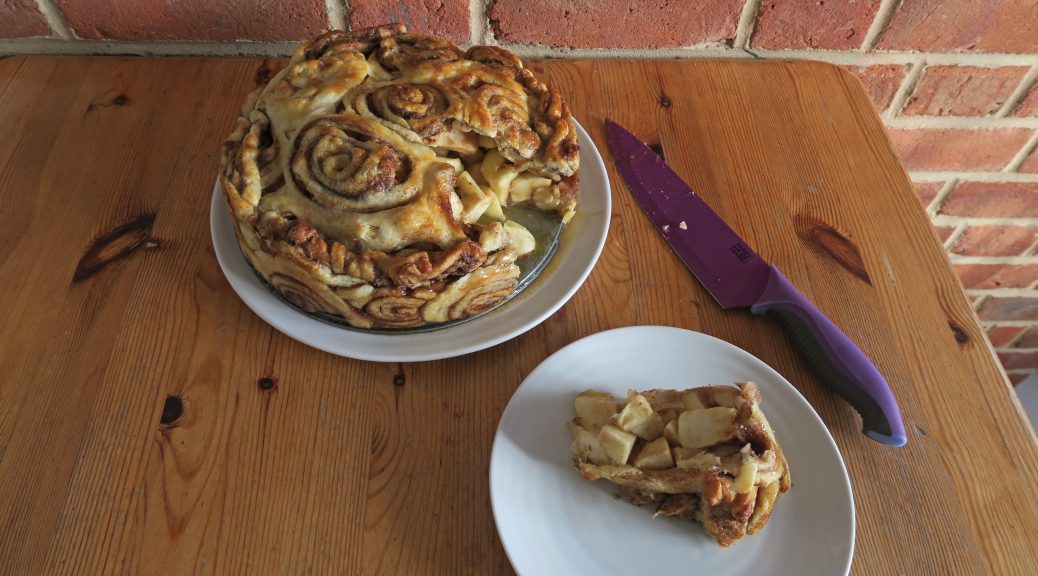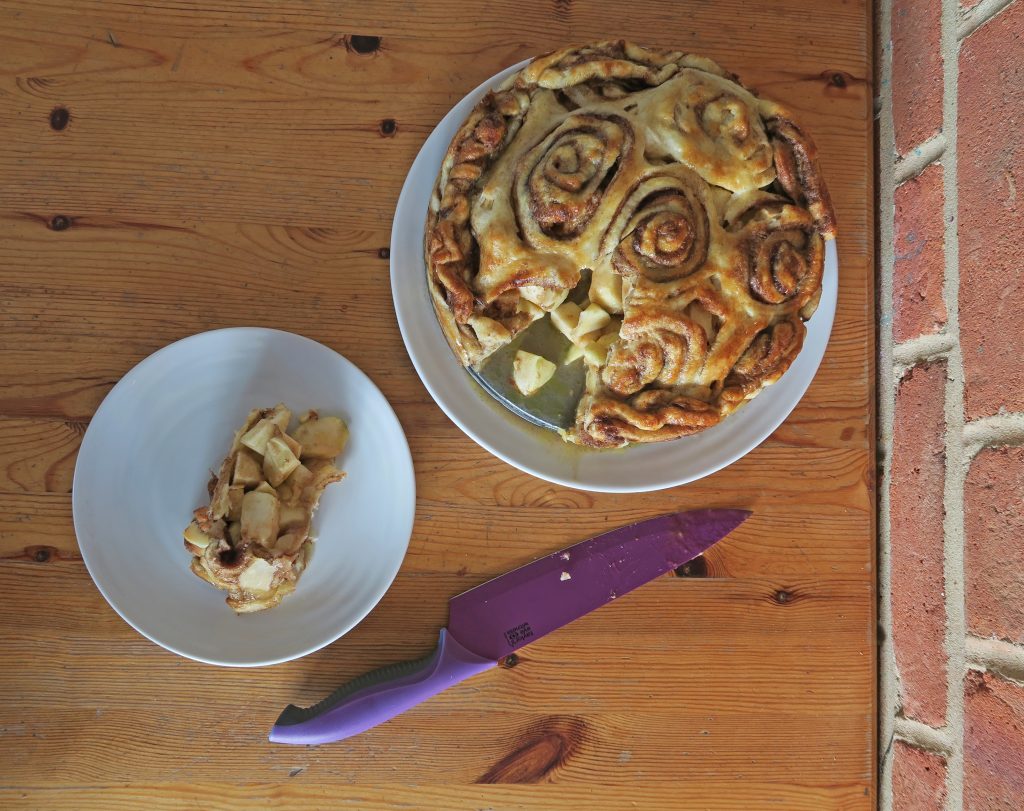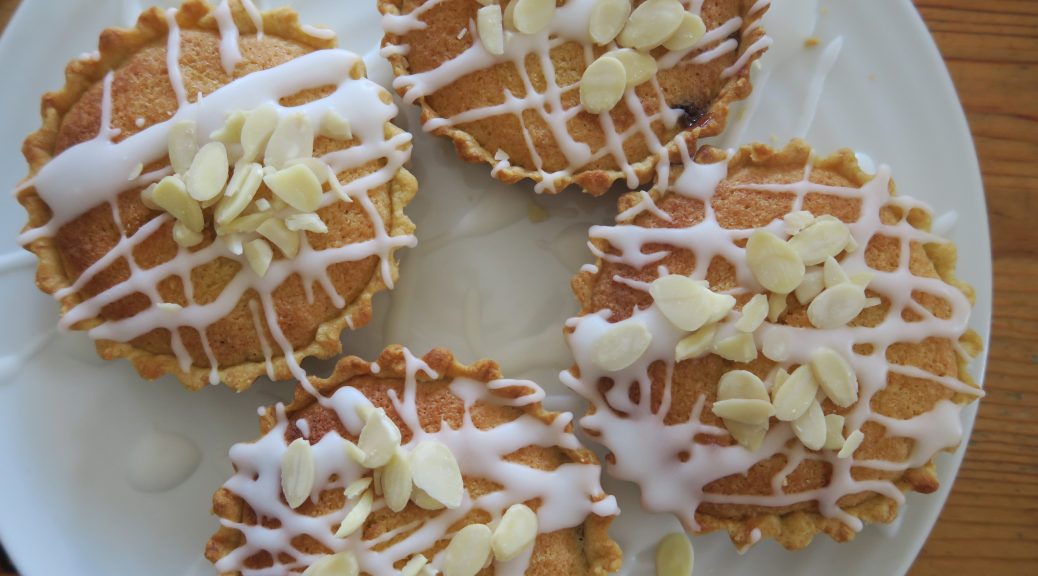
Bakewell Tartlets
As the summer is coming to an end we’re starting to hit peak jam making time where any fresh fruit left over from the summer is being stewed into lots of jam. Down the bottom of our lane we have tonnes of apple and damson trees which are currently laden with fruit ripe for the picking. These can be used to make amazing jams and compotes which work really well in desserts like these delicious bakewell tartlets.

These are by far my favourite tart to make as they don’t require blind baking (baking the pastry before adding the filling) as the filling is baked with the pastry. This makes them so much easier to make and a lot less hassle than most other tarts, so they’re my go-to pastry. The main components of a bakewell tart are pastry, jam, frangipane (an almond cake mix) and icing. Beyond that the whole concept of bakewell tarts are pretty flexible and easy to play with. I’ve made bakewell tartlets for this as they can be cut into quarters which make great bite-sized treats for an afternoon tea stack! You could also just make these as one big tart which is fab for cake sales and sharing.

Recipe
Makes 4
Time: 90 minutes, plus chilling time
Ingredients
For the pastry
- 175g Plain flour
- A pinch of Salt
- 2 tbsp Caster sugar
- 115g Unsalted butter
- 1 medium Egg yolk
- 2 tbsp cold Water
For the filling
- 60g Unsalted butter
- 60g Caster sugar
- 1 Medium egg
- 30g Self raising flour
- ½ tsp Baking powder
- 50g Ground almonds
- A few drops of Almond essence
- 2 tbsp Raspberry jam
To decorate
- 100g Icing sugar
- 1 tbsp Lemon juice
- A few flaked almonds (optional)
Method
- Begin by making the pastry. Put the flour, salt and sugar into a bowl and mix together with a round bladed knife to combine. Add the butter and then use the knife to cut the butter up into small chunks. When you can’t cut the butter up any further, go in with your hands and rub the butter into the flour until the mixture resembles fine breadcrumbs.
- Add the egg yolk and water to the mixture and stir again with a round bladed knife until the mixture comes together to form a dough. Wrap the dough in cling film and then chill in the fridge for at least 30 minutes.
- Meanwhile make the filling. Put the butter, sugar, egg, flour, baking powder, ground almonds and almond essence into a bowl and mix together until smooth.
- Pre-heat the oven to 180˚C. Take your pastry out of the fridge and divided it into 4. Roll each portion out on a floured surface into a thin disc and then line a tarlet tin with each of them. I find the best way to do this is to carefully lay the pastry over the tin and then to ease into the shape, before pressing into the flutes of the tin. Then take a rolling pin and roll over the top of the tarlet tins to remove the excess pastry.
- Spread a little jam over the base of each of the tartlets. Then portion out the frangipane and spread it so that it covers the jam and is even.
- Put the tartlets onto a baking tray and bake them in the oven for 15-20 minutes until the frangipane and pastry is golden brown. Set to one side to cool.
- To prepare the decoration put the icing sugar and lemon juice into a bowl and mix together until smooth.
- When the tartlets have cooled drizzle them with this icing. Then Sprinkle the tartlets with flakes almonds (optional) and serve!

Thanks for reading!
Emma x
